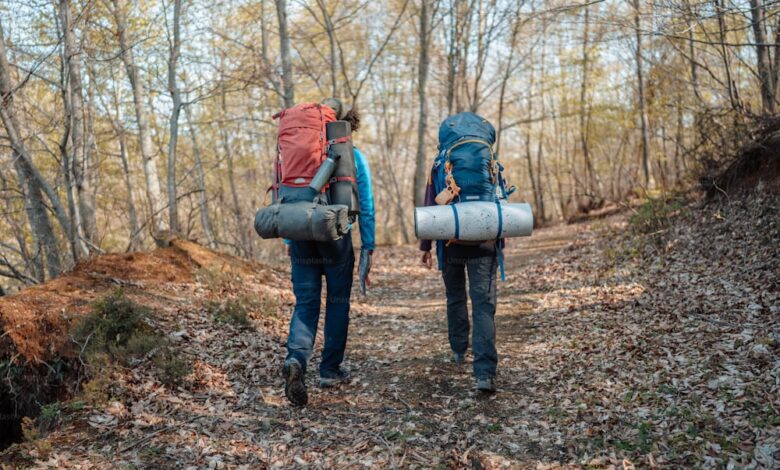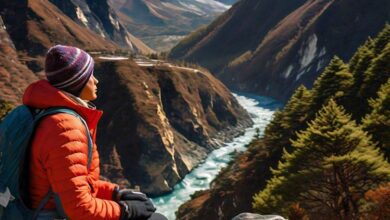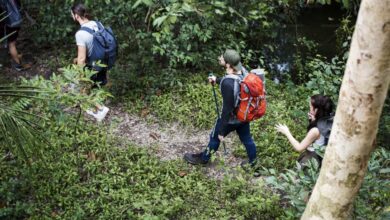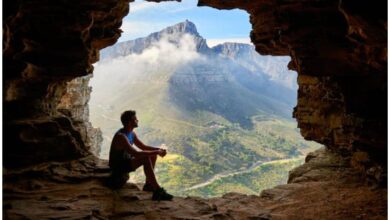How to Manage Trekking Expenses on a Budget

Managing trekking expenses on a budget involves careful planning and strategic choices to ensure a rewarding experience without overspending. The Everest Base Camp trek, renowned for its breathtaking views and challenging terrain, can be managed cost-effectively with some practical tips and considerations.
Start by setting a clear budget that encompasses all potential costs, including flights, permits, accommodation, food, and additional expenses. Flights to Lukla, the gateway to the trek, can be a significant expense, so booking well in advance and being flexible with travel dates can help secure better rates. Consider flying with budget airlines or during off-peak seasons to reduce costs.
Next, plan your trek itinerary thoughtfully. Opt for a shorter trek or one with fewer high-cost amenities if you’re looking to save. Longer treks or those with added luxury accommodations can significantly increase expenses. Research different trekking packages and compare what’s included. Some packages might seem costly but can be cost-effective if they include essential services such as guides, porters, and meals. Conversely, opting for a basic package and arranging additional services separately might also be budget-friendly.
Accommodation costs can vary widely, so choose lodges or teahouses that align with your budget. Everest Base Camp Trek Preparation While some high-end lodges offer more comfort, basic lodges provide essential amenities at a lower cost. Staying in teahouses run by local families not only supports the community but also provides a more authentic experience. When it comes to meals, eating local food rather than imported goods can also help keep expenses in check.
Permits and park entry fees are another expense to consider. Ensure you understand the costs associated with obtaining necessary permits and include these in your budget. Some permits may be included in trekking packages, so be sure to verify this in advance.
Managing your trekking expenses also involves smart financial planning while on the trek. Carrying cash is essential, as credit cards are not widely accepted in remote areas. However, be cautious with cash handling and consider carrying a small amount of local currency for daily expenses. Additionally, avoid unnecessary purchases and focus on essentials to keep your budget intact.
Finally, consider other cost-saving measures such as hiring local guides and porters directly rather than through agencies. This approach can be more economical and offers the added benefit of supporting the local economy. Additionally, prioritize travel insurance that covers trekking-related activities to avoid unexpected costs due to emergencies or cancellations.
By planning ahead, choosing cost-effective options, and being mindful of daily expenses, you can manage your trekking budget effectively while still enjoying the adventure and beauty of the Everest Base Camp trek.
Introduction
Embarking on a trekking adventure, such as the Everest Base Camp trek, requires thoughtful financial planning to manage costs effectively. The trek, known for its stunning landscapes and physical challenges, can also present a range of expenses that, if not managed well, can strain your budget. Understanding how to plan and budget for these costs is crucial for a rewarding experience that doesn’t break the bank. From flights and permits to accommodations and daily expenses, knowing where to allocate funds and how to save can make a significant difference. This guide provides practical strategies for managing trekking expenses on a budget, ensuring you can focus on the adventure without financial stress.
Understanding the Costs of Trekking
Trekking expenses can be diverse and sometimes unpredictable, encompassing various aspects from travel logistics to daily necessities. Key costs include international flights to Nepal, internal flights to Lukla, trekking permits, accommodation, food, and guide or porter services. Each of these components contributes to the overall budget and requires careful consideration. International flights are typically the largest single expense, while internal flights to Lukla and trekking permits are significant but often fixed costs. Accommodation and food expenses can vary based on the trek’s length and the level of comfort chosen. Additionally, hiring guides and porters, though optional, can impact the budget. Understanding these costs and their variables helps in creating a realistic budget and making informed decisions about where to economize without compromising the trekking experience.
Budgeting for Essential Expenses
Creating a budget for essential trekking expenses involves a detailed breakdown of anticipated costs. Start by estimating the major expenses: international flights, internal flights to Lukla, and necessary permits for trekking. These fixed costs should be prioritized in your budget plan. Next, allocate funds for accommodation and food, keeping in mind that these expenses can fluctuate based on the type of lodging and meals you choose. While trekking, sticking to a budget for daily meals and lodging can help manage overall expenses. Additionally, set aside funds for essential services like hiring guides and porters if needed. Factor in a contingency fund for unexpected costs, such as medical emergencies or last-minute changes. By categorizing expenses and allocating funds accordingly, you can maintain better control over your budget and ensure that all essential aspects of the trek are covered.
Choosing Economical Travel Options
Choosing economical travel options can significantly reduce the overall cost of the trek. Everest Base Camp Trek Logistics Start by searching for budget-friendly international flights to Nepal, utilizing fare comparison tools and booking in advance to secure the best rates. For the internal flight from Kathmandu to Lukla, consider booking early and being flexible with your travel dates to find cheaper options. Alternatively, some trekkers opt for a combination of flights and drives, such as traveling to Jiri and trekking to Lukla, which can be more cost-effective. Additionally, consider overland travel to reduce costs, though it may extend travel time. When in Nepal, use local transportation options, such as buses, which are typically more affordable than private transfers. By selecting cost-effective travel options and planning your route wisely, you can manage your budget more efficiently and enjoy your trekking adventure without financial strain.
Accommodation Budgeting Strategies
Accommodation is a significant part of the trekking budget and can vary widely depending on the level of comfort desired. To budget effectively for accommodation, start by understanding the range of lodging options available along the trek. Basic teahouses offer essential amenities at lower costs, while more luxurious lodges provide additional comfort at higher prices. Research and choose accommodations that align with your budget and preferences, balancing comfort with cost. Booking accommodations in advance, especially during peak trekking seasons, can also help secure better rates. Consider staying in simpler lodges or shared rooms to reduce expenses. Additionally, evaluate the inclusion of meals in accommodation packages, as some lodges offer combined rates that can be more economical. By planning your lodging choices in advance and opting for budget-friendly options, you can manage accommodation expenses effectively while still enjoying a comfortable and enjoyable trek.
Managing Food Costs
Managing food costs during the Everest Base Camp trek can significantly impact your overall budget. The cost of meals varies depending on the location and type of food. In the higher altitudes, prices for food and beverages tend to rise due to transportation and supply challenges. To keep food expenses in check, consider these strategies: opt for local dishes rather than international cuisine, as local food is often less expensive and provides a more authentic experience. Additionally, some teahouses and lodges offer meal packages, which can be more cost-effective than paying for individual meals. Plan to carry some snacks and energy bars from Kathmandu to reduce the need to buy higher-priced snacks in the mountains. Additionally, budgeting for daily meals and adhering to a set food allowance can help manage costs more effectively. By making thoughtful choices about food and planning ahead, you can enjoy nutritious and affordable meals throughout your trek.
Hiring Porters and Guides Affordably
Hiring porters and guides is a common practice on the Everest Base Camp Trek Travel Insurance and can be a significant part of your budget. To manage these costs affordably, consider hiring local porters and guides directly rather than through international agencies, which often add a markup. Local agencies or trek organizers in Kathmandu typically offer competitive rates and can provide reliable services. Ensure you negotiate rates and understand what’s included in the service, such as meals and accommodation for the porters and guides. Additionally, hiring a guide and porter as a group can sometimes reduce costs per person. Verify the credentials and experience of the guides and porters to ensure they are well-trained and reliable. By hiring directly and comparing options, you can manage these expenses more effectively while supporting the local economy.
Equipment and Gear Rental vs. Purchase
Deciding between renting or purchasing trekking equipment and gear is an important aspect of budgeting for the Everest Base Camp trek. Renting gear can be a cost-effective option, especially for items that you may not use frequently or don’t want to invest in long-term, such as high-altitude clothing, sleeping bags, and trekking poles. Kathmandu offers numerous rental shops with a range of equipment at reasonable rates. However, ensure that the gear is in good condition and fits well. On the other hand, purchasing high-quality gear might be a better investment if you plan to undertake multiple treks or outdoor activities in the future. Compare the costs of renting versus purchasing and consider the frequency of use when making your decision. By choosing the most economical option based on your needs, you can manage your budget while ensuring you have the appropriate gear for a safe and comfortable trek.
Saving on Transportation to Starting Point
Transportation to the starting point of the Everest Base Camp trek, typically Lukla, can be a significant expense. To save on transportation costs, consider booking internal flights to Lukla well in advance, as early reservations often come with lower prices. Flexibility with travel dates can also help in securing better deals. Another cost-saving option is to explore alternative routes, such as trekking from Jiri to Lukla, which involves a combination of bus and trekking, potentially reducing overall costs. However, this alternative route will extend the total trekking duration. Additionally, traveling in a group can sometimes lead to cost savings on transportation due to group discounts. Evaluate your options and choose the one that best fits your budget and time constraints, ensuring a cost-effective start to your trekking adventure.
Handling Permits and Fees
Permits and fees are essential components of the trekking budget and must be handled carefully to avoid unexpected costs. The Everest Base Camp trek requires several permits, including the Sagarmatha National Park entry permit and the TIMS (Trekkers’ Information Management System) card. These permits are generally affordable but must be obtained before or upon arrival in Nepal. To manage these costs, ensure you apply for the permits in advance and confirm the current fees as they can change. Some trekking packages include permits in their costs, so verify what is covered in your chosen package. Handling these permits efficiently by preparing all necessary documents and paying attention to deadlines can help avoid additional fees or complications. By planning ahead and understanding the permit requirements, you can budget effectively and ensure a smooth trekking experience.
Utilizing Local Markets for Supplies
Utilizing local markets for supplies is an effective strategy to manage expenses during the Everest Base Camp Trek Food and Water. Kathmandu, the starting point of many treks, is home to numerous markets and shops where trekkers can purchase necessary items at reasonable prices. Local markets often offer trekking gear, clothing, and supplies at lower costs compared to international stores. Additionally, these markets provide opportunities to buy local snacks, toiletries, and other essentials. By shopping in local markets, you can not only save money but also gain a sense of the local culture. However, it’s important to ensure that the quality of the items meets your needs. Always check the condition and functionality of gear before purchasing and opt for reputable vendors. By effectively utilizing local markets, you can keep your budget in check while preparing adequately for your trek.
Finding Discounts and Deals
Finding discounts and deals can significantly impact your overall trekking expenses. Start by researching and comparing prices from different service providers, including tour operators, equipment rental shops, and accommodation options. Many companies offer seasonal discounts or early-bird promotions, so booking your trek well in advance can lead to substantial savings. Additionally, look for package deals that bundle services like guides, porters, and permits, which can be more economical than purchasing each component separately. Online travel forums and review sites can also be valuable resources for finding special offers and promotions. Engage with travel communities to discover potential discounts and tips from other trekkers. By being proactive in seeking out deals and comparing options, you can reduce your expenses and make your trekking adventure more affordable.
Emergency Fund and Miscellaneous Costs
An emergency fund is crucial for managing unforeseen expenses during the Everest Base Camp trek. Trekking in remote areas presents the possibility of unexpected costs, such as medical emergencies, equipment repairs, or itinerary changes. Set aside a portion of your budget as an emergency fund to cover these potential issues. Additionally, budget for miscellaneous costs, such as tips for guides and porters, extra meals, or souvenirs. It’s advisable to have access to additional funds, either through a credit card with an international reach or emergency cash. By preparing for unexpected expenses and having a financial buffer, you ensure that you can handle any unplanned situations without disrupting your trek or budget.
Tips for Reducing Unexpected Expenses
Reducing unexpected expenses involves careful planning and strategic actions. Start by ensuring that you have comprehensive travel insurance that covers trekking-related emergencies, including medical evacuations. This can help mitigate significant costs in case of emergencies. Additionally, keep a close watch on your daily spending and stick to a budget for meals and other expenses. Avoid impulse purchases and prioritize essential items. Research and book essential services, such as permits and internal flights, in advance to lock in lower rates. Staying informed about potential additional costs and having contingency plans can also help manage unexpected expenses. By staying vigilant and prepared, you can minimize the impact of unforeseen costs and maintain better control over your trekking budget.
Conclusion and Final Budgeting Tips
Effective budgeting for the Everest Base Camp trek involves a combination of careful planning, strategic choices, and flexibility. By understanding the various costs associated with the trek, such as flights, permits, accommodation, and food, you can allocate your budget more efficiently. Utilizing local markets for supplies, finding discounts, and preparing an emergency fund are crucial steps in managing your expenses. Additionally, being mindful of unexpected costs and maintaining a financial buffer will help ensure a smooth and enjoyable trek. Final budgeting tips include regularly reviewing your expenses, adjusting your plans as needed, and keeping a record of all expenditures. By following these guidelines and staying proactive in your financial planning, you can experience the adventure of a lifetime while staying within your budget.



